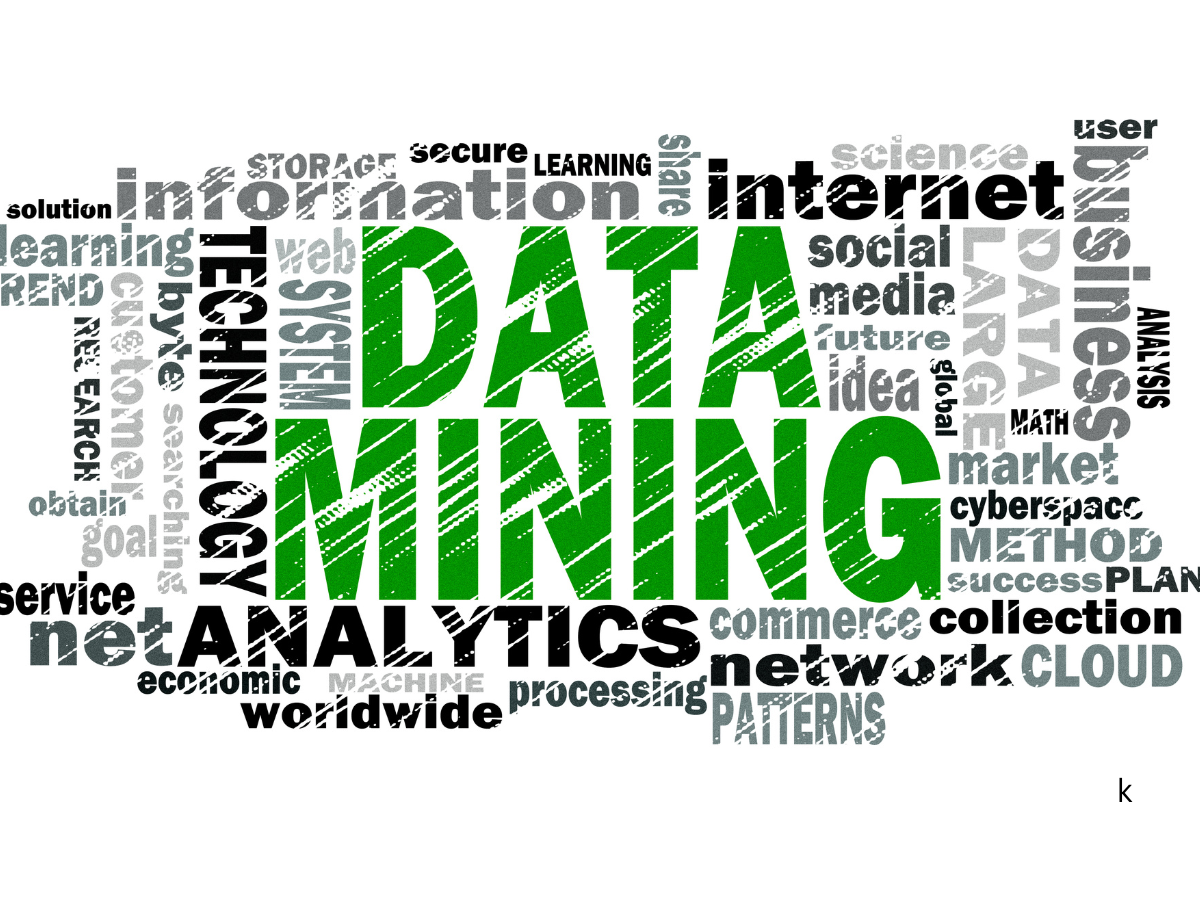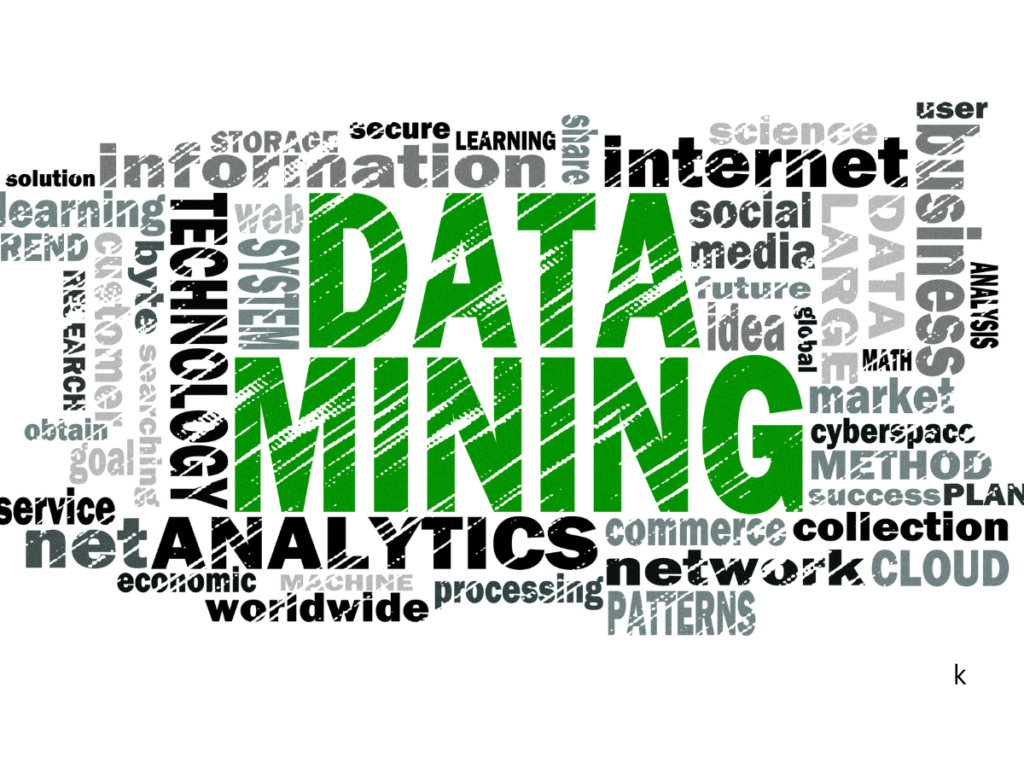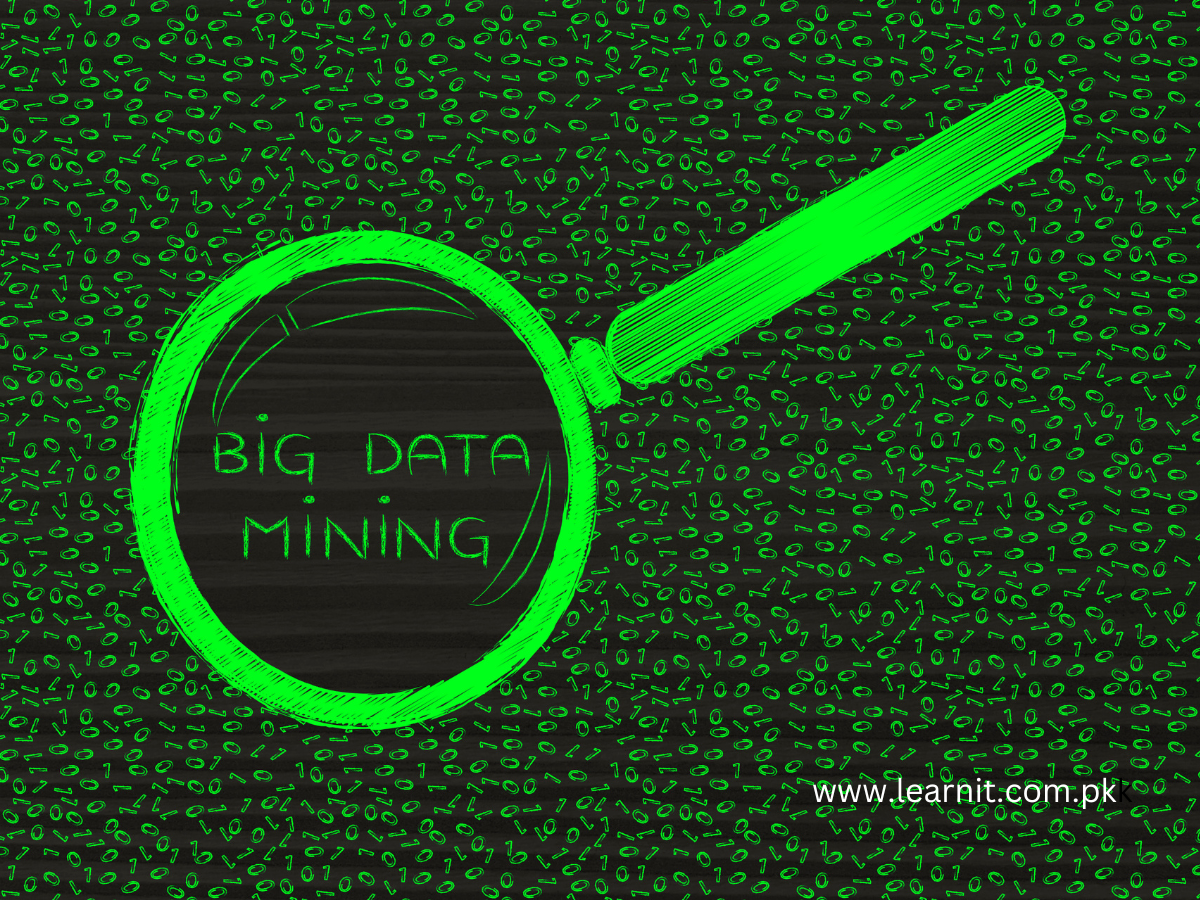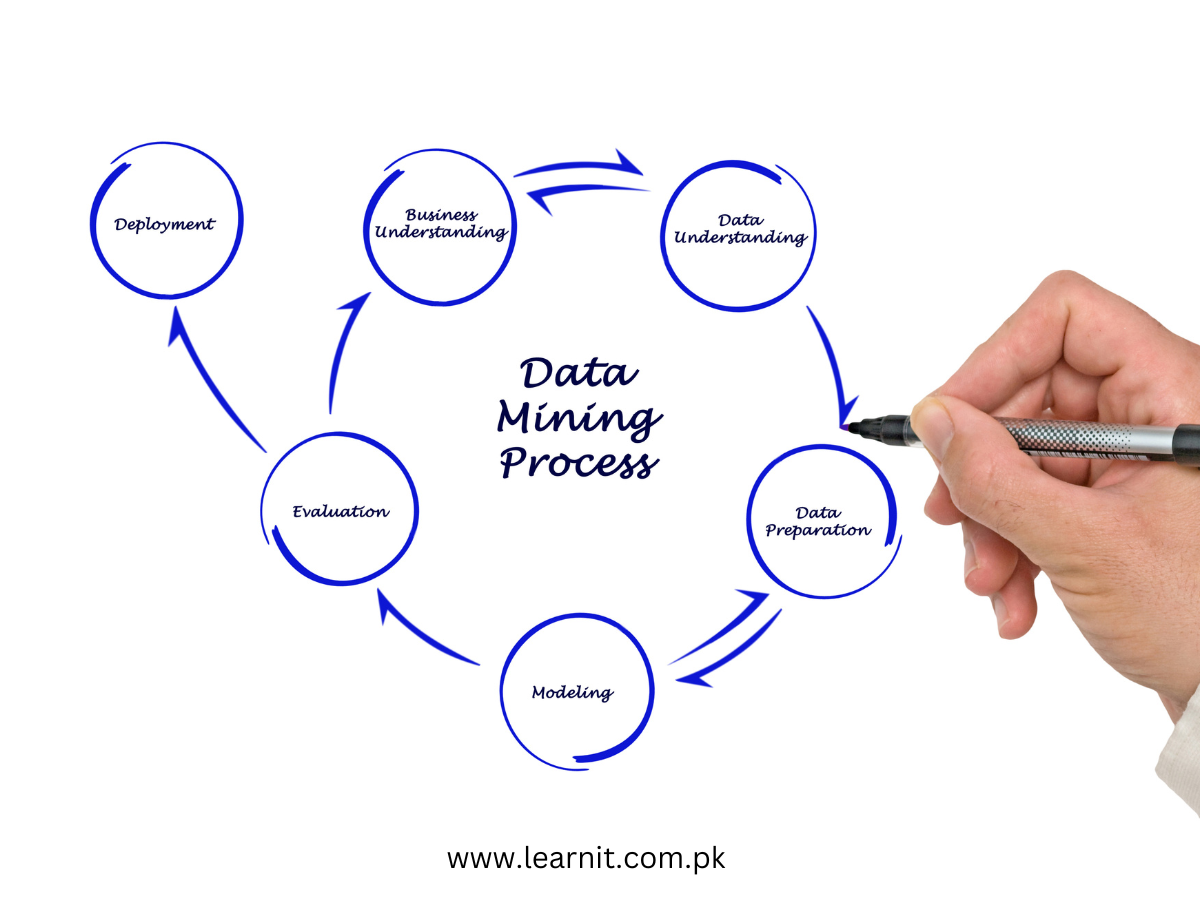Data mining | 17 Objectives of data mining:

In the dynamic landscape of the digital age, data mining stands as a powerful tool that empowers businesses to unlock valuable insights hidden within vast datasets. As technology advances, organizations are generating a wealth of data, ranging from customer interactions to market trends. The primary objectives of data mining revolve around extracting meaningful patterns, trends, and relationships from this data deluge. By harnessing the potential of data mining, businesses can make informed decisions, personalize customer experiences, and gain a competitive edge in their respective industries.
Through the application of advanced algorithms and analytical techniques, data mining endeavors to achieve various objectives. One of the key aims is to identify trends and patterns, providing organizations with a deep understanding of customer behavior, market dynamics, and industry shifts. This knowledge fuels data-driven decision-making, enabling businesses to anticipate market trends and proactively adapt their strategies.

1. Identifying Trends and Patterns:
One of the fundamental objectives of data mining is to identify trends and patterns that might otherwise go unnoticed. By analyzing historical data, businesses can spot recurring trends, seasonal fluctuations, and emerging patterns in customer behavior, product demand, or market trends. Armed with this knowledge, organizations can tailor their strategies to optimize their offerings and meet changing customer preferences.
2. Customer Segmentation
Data mining plays a crucial role in customer segmentation, where customers are grouped based on their shared characteristics and behaviors. By categorizing customers into distinct segments, businesses can create personalized marketing campaigns, enhance customer experience, and improve customer retention rates. SEO optimized keywords and phrases can be incorporated into the segmentation process to attract potential customers actively searching for relevant products or services.
3. Predictive Analysis:
Predictive analysis is a powerful application of data mining that uses historical data to forecast future trends and events. By analyzing past data patterns, businesses can build predictive models that help them anticipate customer preferences, predict sales volumes, and forecast market demand. This proactive approach enables organizations to make well-informed decisions, allocate resources effectively, and stay ahead of the competition.
4. Fraud Detection and Risk Management:
Data mining is instrumental in detecting fraudulent activities and managing risks in various industries, including finance and insurance. By analyzing transactional data and identifying abnormal patterns, data mining algorithms can spot potential fraudulent transactions, saving businesses from financial losses. Incorporating SEO optimized keywords and phrases related to fraud detection can help attract relevant readers seeking insights into safeguarding their businesses.
5. Product Recommendation:
E-commerce platforms and recommendation systems utilize data mining techniques to provide personalized product recommendations to users. By analyzing user behavior, purchase history, and preferences, these systems can suggest products that match individual tastes, increasing the likelihood of sales and customer satisfaction. Incorporating SEO optimized keywords can enhance visibility and attract potential customers actively searching for product recommendations.
6. Process Optimization:
Data mining enables businesses to analyze their internal processes and identify bottlenecks, inefficiencies, and areas for improvement. By understanding the root causes of issues, organizations can optimize their operations, reduce costs, and enhance productivity. SEO optimized content discussing process optimization can attract readers interested in streamlining their business operations.
7. Healthcare and Research:
In the healthcare sector, data mining helps identify patterns in patient data, leading to more accurate diagnoses and personalized treatment plans. Moreover, in research fields, data mining assists in analyzing large datasets, exploring correlations, and uncovering valuable insights, aiding researchers in their discoveries.
8. Enhancing Marketing Strategies:
Data mining empowers marketers to make data-driven decisions, enabling the optimization of marketing efforts for maximum impact. By analyzing vast datasets, businesses can identify high-potential customer segments and tailor marketing campaigns to address specific needs and preferences. This targeted approach leads to improved customer engagement, higher conversion rates, and increased return on investment (ROI). By understanding customer behavior and response patterns, businesses can fine-tune their marketing strategies and allocate resources effectively to reach the right audience with the right message at the right time.
9. Improving Customer Satisfaction:
Customer satisfaction is a critical factor for business success, and data mining plays a crucial role in understanding and enhancing this aspect. Through data analysis, businesses gain valuable insights into customer preferences, pain points, and expectations. By identifying areas for improvement, organizations can deliver personalized experiences that resonate with customers, ultimately leading to higher satisfaction levels and increased customer loyalty. Data mining enables businesses to gather and analyze customer feedback from various touchpoints, such as customer service interactions, surveys, and social media, to continuously improve products, services, and overall customer experiences.
10. Streamlining Supply Chain Management:
Supply chain management is a complex process involving multiple stakeholders, inventory levels, and transportation logistics. Data mining optimizes this intricate web of operations by analyzing historical data to predict demand patterns and optimize inventory levels. By understanding customer demand trends, businesses can reduce excess inventory, minimize carrying costs, and ensure timely deliveries. Moreover, data mining helps identify inefficiencies and bottlenecks in the supply chain, enabling businesses to streamline operations, improve responsiveness, and reduce lead times.
11. Identifying Product Innovations:
Data mining enables businesses to uncover insights from market trends, customer preferences, and feedback. By analyzing these data points, organizations can identify gaps in the market and potential opportunities for new product development and innovation. Understanding customer needs and pain points provides a solid foundation for creating products that align with market demands, leading to higher adoption rates and increased market share.
12. Churn Prediction and Customer Retention:
Predictive analysis, a key component of data mining, plays a crucial role in predicting customer churn and implementing effective retention strategies. By analyzing customer behavior and historical data, businesses can identify at-risk customers and take proactive measures to prevent churn. Retaining existing customers is more cost-effective than acquiring new ones, and data mining assists in building personalized retention strategies that enhance customer loyalty and reduce churn rates, ultimately leading to long-term business growth.
13. Fraud Prevention and Security:
Data mining helps businesses combat fraud and enhance security measures by identifying suspicious patterns and anomalies in transactional data. By analyzing historical transaction data and user behaviors, data mining algorithms can detect unusual activities that may indicate fraudulent activities. This proactive approach to fraud prevention protects businesses from financial losses and preserves customer trust and brand reputation.
14. Pricing Optimization:
Determining the right price for products and services is a critical business decision that directly impacts sales and profitability. Data mining assists businesses in pricing optimization by analyzing market dynamics, competitor pricing, and customer behaviors. By understanding price sensitivity and demand elasticity, businesses can set optimal price points that balance customer value with profit margins, maximizing revenue and market share.
15. Predictive Maintenance:
In industries such as manufacturing and transportation, data mining facilitates predictive maintenance, which is essential for reducing downtime and optimizing operational efficiency. By analyzing sensor data and historical maintenance records, data mining algorithms can predict equipment failures and maintenance needs, enabling businesses to schedule maintenance proactively. This predictive approach minimizes unplanned downtime, increases equipment reliability, and ultimately reduces maintenance costs.
16. Improving Healthcare Outcomes:
In the healthcare industry, data mining holds immense potential for improving patient outcomes. By analyzing patient data, genomics information, and clinical records, data mining algorithms can aid in disease diagnosis, treatment recommendations, and medical research. Data-driven insights contribute to more accurate diagnoses, personalized treatment plans, and advancements in medical practices, leading to better patient care and improved healthcare outcomes.
17. Social Media Insights:
In today’s digital age, social media plays a crucial role in shaping brand perception and customer sentiments. Data mining enables businesses to tap into the vast amount of social media data to uncover valuable insights. By analyzing trends, consumer sentiments, and brand perception from social media platforms, businesses can better understand their target audience, assess the effectiveness of marketing campaigns, and make informed decisions on engagement strategies. Social media insights derived from data mining allow organizations to respond promptly to customer feedback, address potential issues, and build stronger connections with their audience.
Conclusion:
Data mining is a powerful tool that empowers businesses and organizations to extract valuable knowledge from vast amounts of data. From identifying trends and patterns to predicting future events, data mining drives strategic decision-making and enhances operational efficiency. Its applications span various industries, from finance and marketing to healthcare and research. By leveraging SEO optimized content in the analysis and presentation of data mining insights, businesses can increase their online visibility and attract a broader audience interested in harnessing the potential of data-driven decision-making. As technology continues to advance, data mining will remain at the forefront of innovation, helping businesses gain a competitive edge and discover new opportunities in the information goldmine.






6 Comments